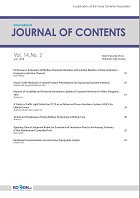- Log In/Sign Up
- P-ISSN1738-6764
- E-ISSN2093-7504
- KCI
 ISSN : 1738-6764
ISSN : 1738-6764
Adoption of RFID Household-based Waste Charging System in Gangnam and Seocho in Seoul:Based on Technology Hype Curve Model
Abstract
Despite their various similarities, Seoul’s’ Gangnam and Seocho districts showed different patterns in the adoption of the RFID household-based waste charging system. Gangnam, one of the 25 wealthiest districts in Seoul, first adopted the RFID system in 2012, but decided abandon it a year later due to inconvenience, sanitation, budget limitations, and management related issues. Unlike Gangnam, Seocho, a largely similar district to Gangnam , started to implement the RFID system in 2015 and successfully adopted this innovation. In this paper, we explain the adoption behaviors of these two districts using a Technology Hype Curve Model with 5 stages. Unlike traditional technology adoption theory, the Hype Curve Model concentrates on the big chasm between early majorities and late majorities, which is a core reason for discontinuity in innovation diffusion. Based on our case study result, the early majority easily gave up adoption due to immature technological and institutional infrastructure. However, Seocho district, who waited until the deficiencies had been sufficiently fixed since late majorities, succeeded at incremental diffusion. Since its invention by Gartner cooperation, the Hype Curve Model has not received enough attention in academia. This paper demonstrates its explanatory power for innovation diffusion. Similarly, this paper focuses on the importance of institutional framework in the diffusion of innovation. Lastly, we compare the behavior of two local governments in supporting and diffusing RFID systems to draw relevant policy implications for innovation diffusion.
- keywords
- Case Study, Chasm, Technology Hype Curve Model, RFID.
- Downloaded
- Viewed
- 0KCI Citations
- 0WOS Citations

